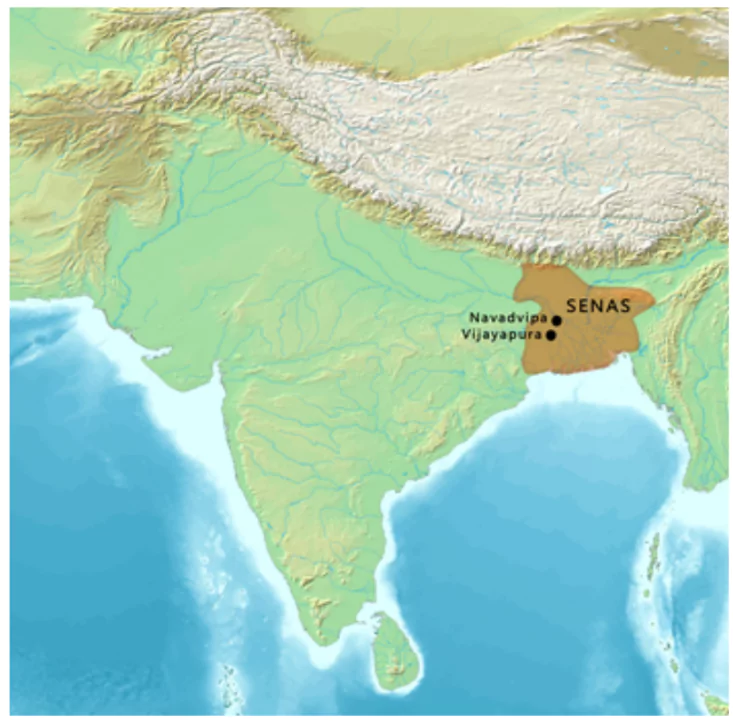Introduction
The Sena Dynasty rose to power in East Bengal around 1097-1225 AD, replacing the Palas. Originating from Karnataka, they claimed ties with Dakshinapatha kings. Led by Vijayasena, they established independent rule, marrying into influential dynasties like the Shuras. Their reign marked cultural advancements and the introduction of Kulinism.
Legacy of the Sena Dynasty: Cultural Flourish and Political Shifts
- Origins and Rise: Emerged around 1097-1225 AD, replacing the Palas in Bengal.
- Decline of Varmans: The Varmans rose to power in the early 11th century, succeeded by the Senas, who likely originated from the Kannada-speaking region and claimed links with the kings of Dakshinapatha.
- Founder of Sena Dynasty: Vijayasena, who consolidated power in Western Bengal during Mahipala II’s reign.
- Senas originally from Karnataka, migrated to Bengal, possibly as vassal lords under the Palas.
 Vijayasena’s Reign:
Vijayasena’s Reign:
- Vijayasena, a significant Sena king who ruled from 1095, played a crucial role in the region’s cultural development, with his reign detailed in the Deopara Prasahsti inscription (stone inscription).
- Established independent rule in Bengal after aiding Ramapala and defeating the Palas.
- Married into the Shura dynasty, enhancing political power.
- Supplanted the Varmans, expanded control over Bihar and Vanga (southeastern Bengal).
- Ballala Sena: Successor of Vijayasena, was noted for his learning, authorship, and the introduction of the social system of Kulinism.
- Continued military campaigns against remnants of Pala rule.
- Renowned scholar and author, wrote Danasagara and initiated Adbhutasagara.
- Laksmanasena’s Reign: Victories over Gauda, Varanasi, Kamarupa, and Kalinga.
- Lakshmanasena: the last Hindu ruler of Bengal and son of Ballal Sena, known for his cultural advancements,
- Literary Figures: He had notable literary figures like Jayadeva (Gita Govinda), Halayudha and Sridharadasa at his court.
- His successor maintained control over Vanga until the mid-13th century when the Deva dynasty overtook it.
- Known for generosity and Vaisnava faith.
- Decline and Legacy: Fragmentation of the Sena kingdom before Muhammad Bakhtiyar Khalji’s final blow in 1204 AD.
- Succession by Vishvarupasena and Keshavasena.
- Associated with the decline of Buddhism and the rise of orthodox Hinduism in Bengal.
- Contributed to the development of Sanskrit literature and sculptural art.
Enroll now for UPSC Online Course
Conclusion
The Sena Dynasty, led by influential rulers like Vijayasena and Ballala Sena, significantly shaped East Bengal’s history. Their patronage of learning and art, military conquests, and cultural reforms left a lasting legacy. Though eventually supplanted by the Deva dynasty and Muslim conquests, the Senas’ contributions to Sanskrit literature and sculptural art endure in Bengal’s heritage.
![]() May 14, 2024
May 14, 2024
![]() 4373
4373
![]() 0
0
 Vijayasena’s Reign:
Vijayasena’s Reign: